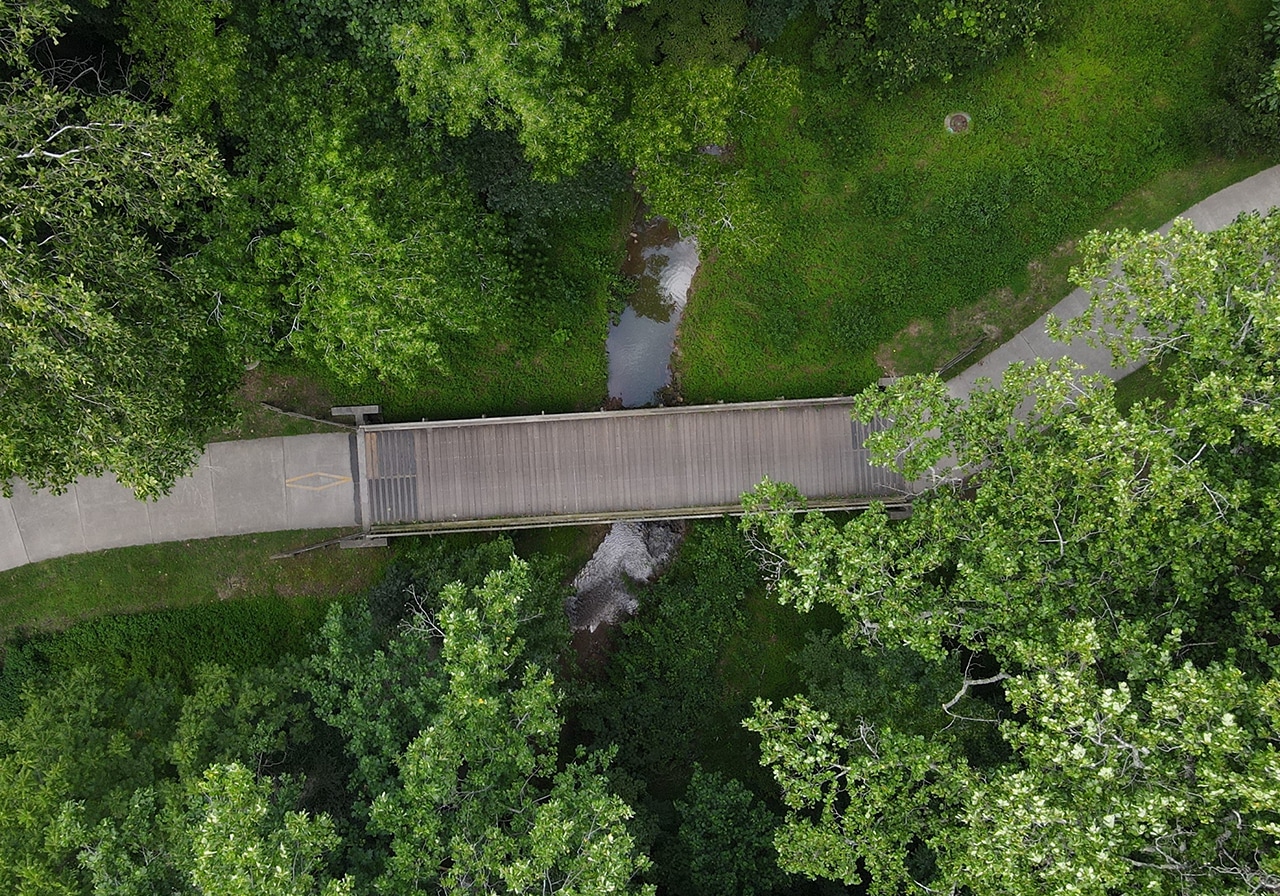Restoring the Stream System
[[translate(episode,'title')]]
[[translate(episode,'audioCredit') || translate(episode,'credit')]][[translate(episode,'title')]]
[[translate(episode,'audioCredit') || translate(episode,'credit')]]Audio Transcript
The Museum Park is home to two streams that support surrounding ecosystems: House Creek and an unnamed tributary. A creek is a natural stream of water normally smaller than a river, and a tributary is a stream or river that flows into a larger stream, river, or lake.
Over time these streams have experienced heavy erosion. Erosion is what happens when land is worn away by water or wind. The streams have eroded to a point where the water can no longer reach the land next to the stream. This area is known as the floodplain, or riparian zone. The purpose of the riparian zone is to absorb water during a storm. This removes pollutants from the water and prevents flooding downstream.
Sediment is made of rocks, minerals, soil, and other organic material. It’s the number one pollutant in our streams. When erosion happens further upstream, the sediment moves into the water downstream. It destroys habitats and has an impact on the stream as a whole. Trees removed from upland areas increase the quantity of water flowing into streams. This causes increased erosion and sedimentation in the stream channel.
This problem has only gotten worse with more severe storms associated with climate change. Heavy rainfalls have accelerated erosion. Unfortunately, we know that climate change and these severe storms are going to continue, so the Museum is dedicated to restoring the natural function of the stream. The goal is to stabilize this habitat and build resiliency against climate change.
In 2020 the NCMA began working on restoration plans for the Museum campus, House Creek, and the unnamed tributary. This restoration project aims to address the stabilization of the stream system.
The stream systems will be restored by raising the streambed and connecting it with the floodplain. This will build climate resiliency and prevent erosion by allowing water to spill out of the channel during intense rain events.
The restoration design will use natural stream features to support fish and macroinvertebrates. Macroinvertebrates are animals without a backbone that can be seen without a microscope. These tiny animals help remove pollutants from the water. Stone and gravel control structures will stabilize the stream. Restoring this natural stream will also create wetland habitats, which provide living environments for amphibians and other wildlife.
During the project some trees will be removed to connect the stream channel to the upland forest area. Trees that are removed will be repurposed as structures in the stream or made into lumber for benches.
There are ecological benefits to restoring the stream that include improved water quality and increased habitats for wildlife in the Park. As part of the larger Neuse River Watershed, this stream restoration will also provide a positive impact on water quality and habitats downstream.
The Park is an escape, a respite for the Triangle community and North Carolinians across the state. Restoring and protecting the Park’s stream system will preserve an essential part of our state’s natural history, making it a peaceful, welcoming place for everyone.
